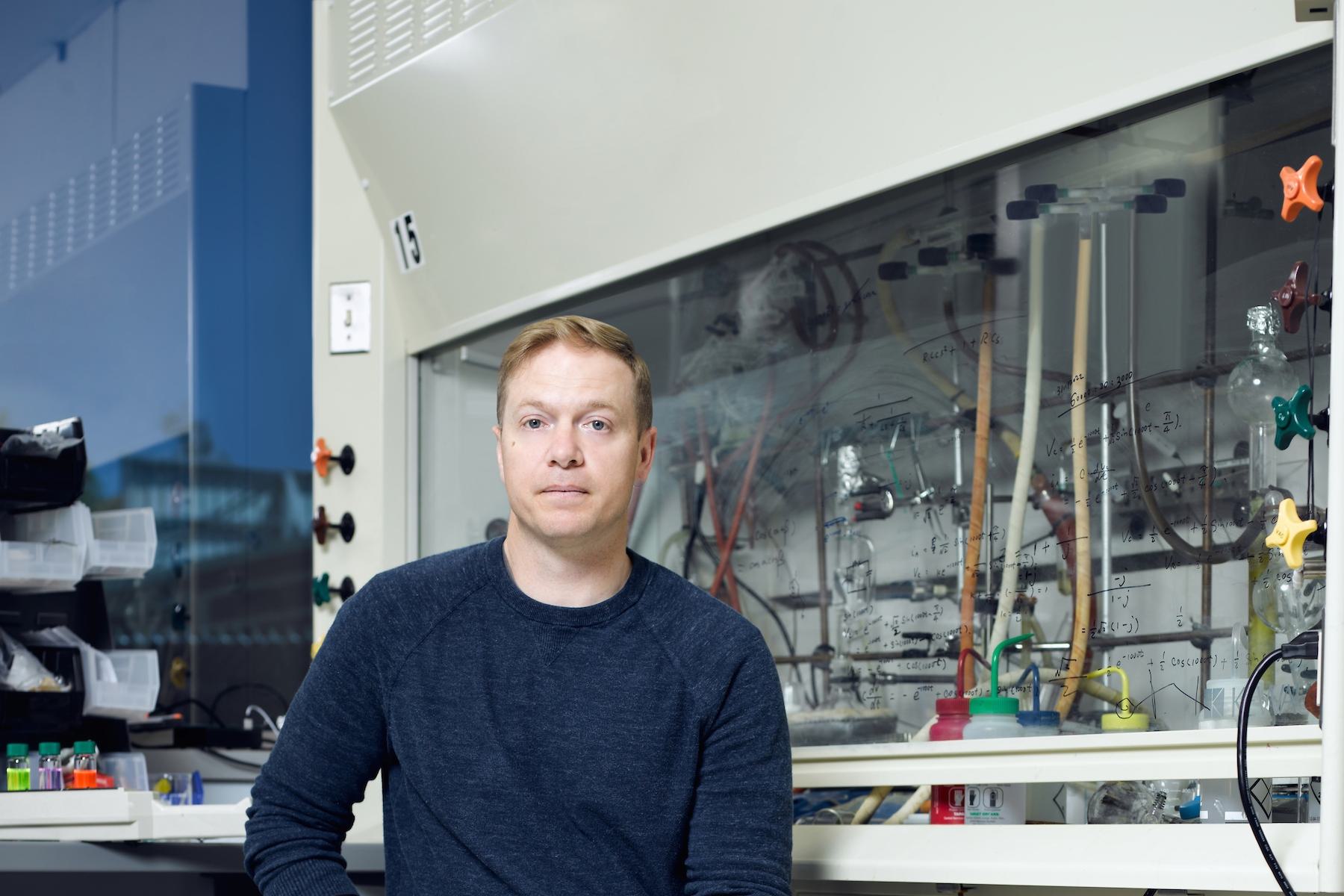Using fluorescence to unlock new layers of information.
It is axiomatic of twenty-first century life that smartphones have revolutionized nearly everything: media, communication, photography, navigation, and commerce. But despite steady improvements in cameras, accelerometers, and gyroscopes, smartphones have been unable to replace the advanced sensing equipment that is a staple of medical, scientific, and industrial applications. Thermal cameras, gas analyzers, spectrometers, and highly sensitive thermometers have not been squeezed into apps. Precision sensing requires specialized and expensive equipment. “Our big idea is to make laboratory-class sensing accessible enough that everyone can have it in their pocket, or on their kitchen counter,” says Jason Cox, CEO of C2Sense.
Originally spun out of the MIT Department of Chemistry in 2013, C2Sense develops advanced optical sensing systems that provide unprecedented sensitivity and specificity at extremely low cost. Broadly focused on both medical diagnostics and supply chain integrity, C2Sense has developed two distinct product platforms that leverage core technological breakthroughs in chemistry and photography. What unites them is the innovative application of fluorescence—the tendency of some materials to emit absorbed light, over defined lifetimes. We most commonly encounter fluorescence with amusement black lights (like a nightclub), but C2Sense has exploited the nuances of fluorescence for novel applications in rapid diagnostics, product authentication, and product viability assurance. “We are now able to transfer the capability of fluorescence lifetime spectroscopy from the realm of $100,000 instruments to the ubiquitous devices that we all carry around,” says Cox.
In the medical space, C2Sense’s ”Halo” platform replaces the visible markers on conventional lateral flow diagnostic tests with highly sensitive and machine-readable fluorescent markers. Existing lateral flow assays—whether for covid, flu, pregnancy, or myriad other conditions—predominantly rely on colored nanoparticles that build up on the target protein in high enough concentrations that they become visible to the naked eye (as in the red line on a covid test). C2Sense replaces those tiny colored beads with fluorescent labels, which powerfully glow when illuminated with UV light; and replaces the naked eye with a compact diagnostic reader, remotely connected to healthcare providers. The Halo device—a handheld reader built around low-cost digital camera components—can “see” those fluorescent markers with a sensitivity between ten and fifty times greater than existing colorimetric lateral flow tests. ”We're incredibly good at measuring the marker’s presence, even using low cost electronics,” says Cox. When enabled with a HIPAA-compliant connection to remote healthcare providers, Halo opens up new paradigms in home diagnostics, with far greater sensitivity, accuracy, and security than conventional tests that rely on a human reader.
Commercialization follows a clear path. Since the fluorescent protein markers are composed of commodity chemicals with well-established supply chains, they can easily and cost-effectively replace the colorimetric markers widely used by lateral flow test manufacturers. With clinical trials ongoing, Halo is being adopted by immunoassay test manufacturers for use across their existing portfolios of antigen tests.
In the supply chain space, C2Sense is applying its expertise in fluorescence to create revolutionary new product assessment techniques. Expensive time-resolved fluorescence spectrometers have long been used to measure molecular behavior in laboratory settings, at time scales as small as nano or picoseconds. C2Sense is able to conduct similar measurements using ordinary smartphone cameras, by using patented algorithms that leverage the inherent tendency of CMOS cameras to use a rolling shutter to create an image. “We looked at that and realized it was a feature, not a bug,” Cox explains. “If each line of pixels in the image is being measured at a different point in time, we can measure the fluorescence lifetime of a material within a single frame.”
With a growing library of proprietary luminescent molecules, C2Sense can offer entirely new ways to qualitatively and quantitatively assess products of all kinds. Oxygen-sensitive tags can reveal whether or not vacuum-sealed food packaging is intact; temperature-sensitive tags can precisely show any excursions experienced during shipping; uniquely generated ID tags can assure product authenticity. C2Sense’s luminescent materials can be printed like inks, added to pharmaceuticals, or woven into fabrics. And they can be read using a conventional smartphone equipped with a snap-on UV light, under real-world environmental conditions. C2Sense’s software can then interpret and quantify subtle changes in molecular activity by precisely measuring the fluorescence lifetime. The growing list of applications include product verification and authentication; moisture, oxygen and temperature sensing; and discrete traceability or visible labeling.
“By engineering materials that glow a bit longer than everything else, and by engineering a camera that precisely measures that glow, we can detect new layers of information,” says Cox. “When we flip on our scanner, it’s like seeing a lighthouse in the middle of the night.”

